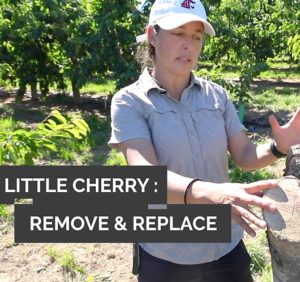Washington State University Extension, in partnership with county conservation districts and pest boards, announced availability of cost-share funds for the removal and testing of trees infected with X disease and little cherry disease. According to a Sept. 17 news release, funding is available through a grant from the Washington State Department of Agriculture Specialty Crop Block Grant Program beginning Oct. 1, pending U.S. Department of Agriculture approval.
Eligible cherry, peach, nectarine, plum and other stone fruit orchards must have suffered a tree loss due to confirmed X-disease phytoplasma or little cherry virus, and the affected orchard must be within 10 miles of other orchards owned by another legal entity. Tree removal must include more than 20 trees, with costs incurred after Sept. 30. Reimbursement levels are up to 50 percent of the cost share for up to 10 acres, with a maximum of $7,500 per applicant. A total of $225,000 will be disbursed over three years, according to the release.
X disease and little cherry disease cause small, pale, bland, unmarketable fruit in cherries. In peaches, plums and nectarines, X disease symptoms are typically yellowed, curled leaves and shothole, as well as small, deformed fruit. There is no cure: Infected trees must be removed to stop the spread of the pathogens.
According to the release, the economic impact of tree removal during the seven-year re-establishment period averages $118,095 in establishment costs and lost revenue per acre.
For more information and a link to an application, go to: http://treefruit.wsu.edu/cost-share-for-little-cherry-and-x-disease-tree-removal.
For further questions, contact Tianna DuPont, WSU Extension, by phone at 509-713-5346 or by email at tianna.dupont@wsu.edu.
—by Jonelle Mejica







Leave A Comment